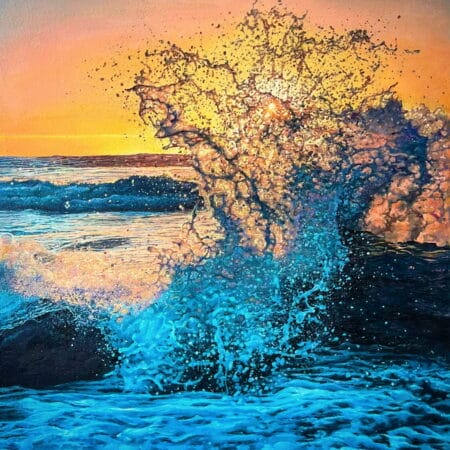“Degenerate art” is artworks and cultural currents that did not correspond to their ideology during the National Socialist dictatorship in Germany and were therefore unable to reconcile with the understanding of art and the ideal of beauty of the Nazi regime.
The word "degeneration" was used for the first time in the 19th century in the derogatory connection and originally comes from Hochmitteldeutsche, where it had the meaning "from the species". The Jewish cultural critic Max Nordau tried to prove that the degeneration of art can be attributed to the degeneration of artists. These theses were taken up by the National Socialists .
In the “degenerate art” campaign, the art itself was in the sight of the state. It is one of the darkest chapters in the German Museum and Art History.
Works, certain art movements that did not correspond to the beauty ideas and the ideology of the National Socialists were included or destroyed to a significant extent. The confiscated works were brought in depots in Berlin and Schönhausen Castle.
its peak in 1937. Within a few days, hundreds of works by modernity, which were an expression of “cultural decline”, were confiscated and banished from the public. In a second wave of confiscation, all works of art that were considered "degenerate" by the regime were removed from the collections.
A total of almost 20,000 works were affected by 101 museums and collections. After official announcement, 1004 paintings and 3825 graphics were burned on March 20, 1939 in the courtyard of the main fire station in Berlin-Kreuzberg. Other works were auctioned in Switzerland.

From 1936 everything in Germany was considered degenerate, forbidden and persecuted. Only the "German art" approved. The degeneration was used as a justification to the German people to exclude an entire population group.
The confiscated works were shown in Munich in 1937 in the exhibition “degenerate art” , which was opened in July. This exhibition was a counter event for the "Great German Art Exhibition", which was opened shortly before.
At the exhibition "degenerate art", all works were cried together in a confined space and provided with negative inscriptions in order to convince the public of the inferiority of the works.
The legitimation of the expropriation of the museums was subsequently carried out by the "law on the confiscation of products of degenerate art" on May 31, 1938. Thus, they laid the basis for the "exploitation" of the works for procurement of currency.
Finally, using just one example, I would like to present the fate of Jewish artists. Otto Frisch , Jew, socialist and abstract artist who was born in Pomerania in 1878, focused on the persecution with his works.
His works were defamed, a lot of work destroyed. Contacts in his old homeland Pomerania were made more difficult and made impossible. After years of escape, his fate ended in a concentration camp in which he was murdered.
Works of art by Otto friendly, who luckily survived the time, are a permanent and warning memory for everyone.
In the following short video, you can watch a whole rich in famous works that were given the “degenerate art” label:
The video is accompanied by music and also provides a few short facts about this chapter in German art history. We wish you an informative and exciting experience.
Free author in the categories Art (Art Brut), interior design / interior, manual work and literature (novels).

















